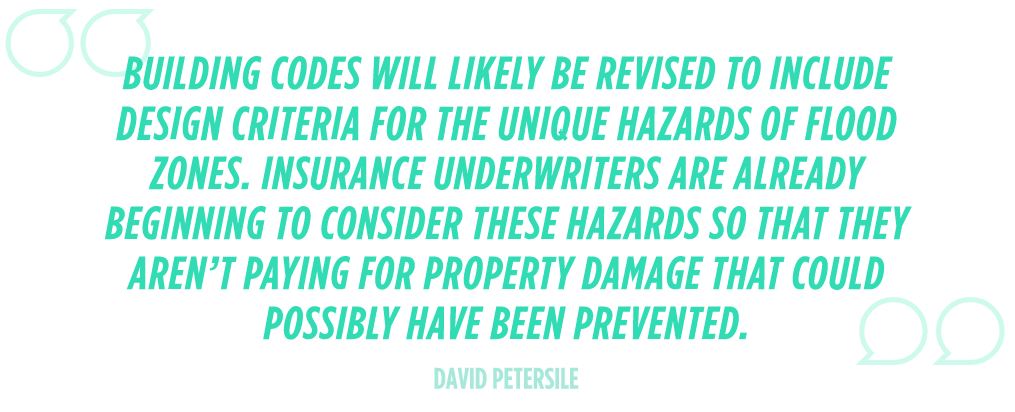The City of Boston Local Floodplain Administrator (LFA), which helps citizens and businesses adhere to Federal Emergency Management Agency (FEMA) regulations, predicts a sea level rise of 2.5 feet over 1900 levels in that area by 2050, and a 5-foot rise for 50 years after that. This prediction made site grading and substation equipment foundation elevation critical features for Station 99 — but also posed significant challenges, including where to build.
“Building in a crowded urban area means you really only have two choices: build up or down,” says Robbyn Reed, section manager at Burns & McDonnell, who provided design and program management services for the project.
Sandwiched between a brewery and an area of the Massachusetts Turnpike commonly referred to as “The Big Dig,” the land was in a good position to house a substation to supply power to a growing area.
Building Up, Up and Away
“With the foundation at 3.5 feet, the water wouldn’t have necessarily created a hazard to the electrical equipment,” says David Petersile, project manager at Burns & McDonnell. “However, Eversource decided to raise the base to 18 feet, essentially providing storage space for company equipment that wouldn’t be damaged in the event of an average or even a 100-year flood event.”
Specialty drilling equipment was brought in to overcome underground obstructions. Then the cast-in-place reinforced concrete and structural steel erection work moved ahead. In spring 2016, the platform was ready for electrical equipment, and the project was completed in December 2016.
Eversource didn’t have to wait long for the design to be tested. In January 2018, a storm called a “bomb cyclone” caused coastal flooding that neared Boston’s highest level since 1921. Despite nearby flooding in streets and other buildings, Station 99 was not affected and had no disruption of service.
“Building codes will likely be revised to include design criteria for the unique hazards of flood zones,” Petersile says. “Insurance underwriters are already beginning to consider these hazards so that they aren’t paying for property damage that could possibly have been prevented.”
To mitigate storm damage, many new buildings in the Boston Seaport District have already moved electrical and mechanical equipment like switchgear and fire pumps from basements to a mid-floor or the roof.
Station 99 included another protective element — a perforated metal windscreen around the perimeter that was created by local design firm Utile Designs at the suggestion of the Boston Redevelopment Authority. While the windscreen provides relief from strong winds, the aesthetics are important in an area that stakes its future growth on outward appearance to local restaurant patrons and real estate investors.






.png)